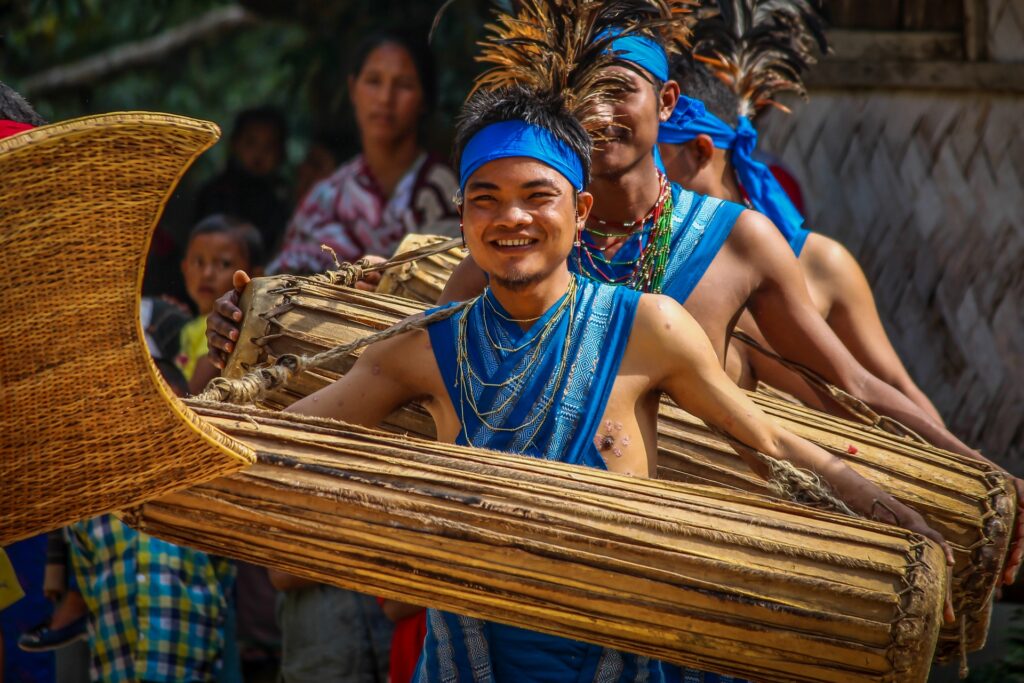Around 400 BC, a Tibeto-Burman ethnic group known as the A’chik Mande – “People of the Steep Hills” – crossed into India from Tibet. Their culture and religion, rich in festivals and storytelling, has for centuries revolved around the communal and sustainable management of forests through customary law. For 20 years the Garo Green Spine project has built on these practices, ensuring that A’chik Mande villages remain owners, stewards and beneficiaries of protected areas.
Based in the Garo Hills of Meghalaya State in northeast India, the Garo Green Spine is a joint collaboration between the A’chik Mande, World Land Trust, and our partner Wildlife Trust of India. With support from donors like you, Project Mongma Rama will fund the next phase of the Garo Green Spine, creating an almost completely contiguous network of protected areas stretching 50 miles from east to west. Read on to learn how the project has already impacted the lives of Garo’s communities – impacts that you can now help to expand.
Livelihoods: A legacy of a better future for local communities
Over two decades, this project has helped communities to transform elements of their lives. To the villages setting land aside for conservation, Garo Green Spine has brought livelihood gains from rice mills to fishery ponds; training and resources for poultry, pig rearing and bee-keeping; workshops, drying stoves and irrigation pipes for horticulture; motorboats, suspension bridges, sanitation facilities, water tanks, household solar lamps and more. With your help, the protection of thousands of hectares more this decade can extend these foundations of a better future to new villages.
As part of Project Mongma Rama, 35,000 ha (86,000 acres) of land will be brought under biodiversity-friendly village land management plans, allowing communities to extract resources in a sustainable way. WLT will be supporting 15,000 ha (37,000 acres). Credit: Wildlife Trust of India / Upasana Ganguly
Healthcare: Medical checks, hospital equipment and sanitation facilities
Since 2003, this project has boosted access to healthcare in an area where historically this has been an issue. The impact becomes apparent in the milestones reported by our partner WTI, from the 550 people who have benefited from free medical checks at day camps held since 2018 alone, or the sanitation facility funded in the village of Baladinggre and the medical equipment supplied to three other villages. But the importance of this work is also illustrated by some of the individual stories, such as how a hearing aid has transformed a teenager’s life in the village of Chandigre.
The free medical checks provided by WTI are hugely important in the Garo Hills, where some communities live in remote locations, all in one of India’s poorest states. Credit: Wildlife Trust of India / Upasana Ganguly
Education: School renovations, computer centres and more
To support Garo Green Spine is to invest in the foundations of a better future. This project has already delivered computer centres to 10 villages in the past two years, as well as funding furniture for local schools and the renovation of playgrounds, football pitches and centres like the Mandalgre L.P. School. For Garo residents, the project has followed this with computer certification courses, livelihood workshops and Nature Guide training for youth. At Garo Hills, education is already paving the way for a new economy and with your help, this important work can go on.
WTI CEO Vivek Menon (foreground left) inaugurated the computer centre in the village of Chandigre. Credit: Wildlife Trust of India / Upasana Ganguly

